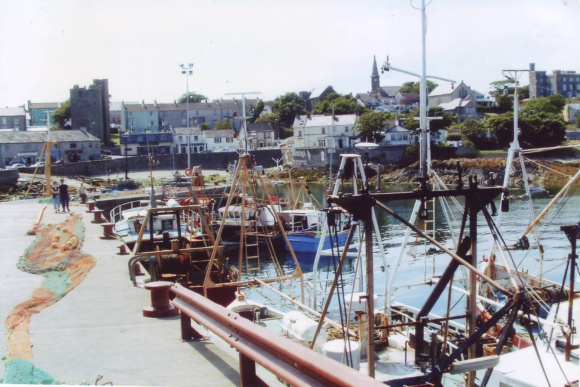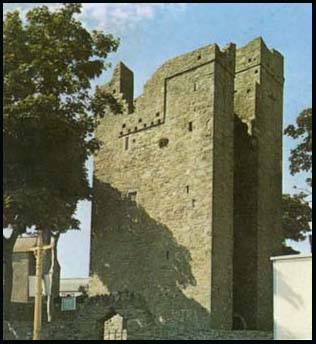|
Ros
Davies' Co.
Down, Northern Ireland Family History Research Site
© Rosalind Davies 2001 Permission granted to reprint research for non-profit use only |
Ardglass Parish
| Ardglass town | Church of Ireland | Methodist Church | ||
| Ardglass Catholic | Ardtole Church | Jordan's Castle | King's Castle | Moore's Castle Hotel Ardglass c. 1900 |
The town was burnt down in 1433 by the O'Neills and MacDonnels acting together. In 1543, the O'Neills of Clannaboy suffered considerable loss at the battle at Ardglass from the Savages, who were assisted by the English of Dublin. Henry O'Neill was taken prisoner by the English. When the regiment of Sir James Montgomery took possession of Lecale, Ardglass became the scene of many bloody skirmishes. An examination of witness on 7 May 1653 attest to this (O'L V1 p 169+) Trade decreased and by 1744 the
town was described as consisting only of a few ordinary cabins and 4
or 5 old decayed castles, with 29 Protestant and 62 Catholic families
living there. The returns of 10 Jun 1764 show there were 60 members
of the Church of Ireland, 35 Presbyterians and 106 Catholics . But in
1790, Charles Fitzgerald rebuilt the castle and William Ogilvie rebuilt
the town & built a pier and a lighthouse in 1813 which created an
excellent port at high tide. Newspaper articles from Down
Recorder; Newspaper article from Newtownards
Chronicle; |
||||||||
|
References;V17 p 7 OSM ; DR; DR*; 5/11/03 & 3 /9/1938 ; LWAG p48-71; NC; O'L B p 153, 322; Inv 2001 p 40;GV; SSM p76-77,94; RICLD p 79; POD ; LR 2011 p64-72( herring fishing) |
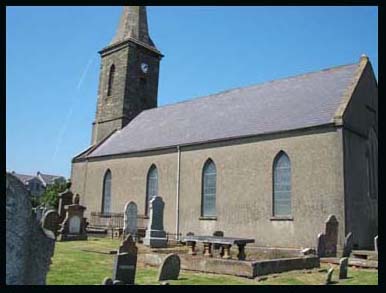 |
|
||||
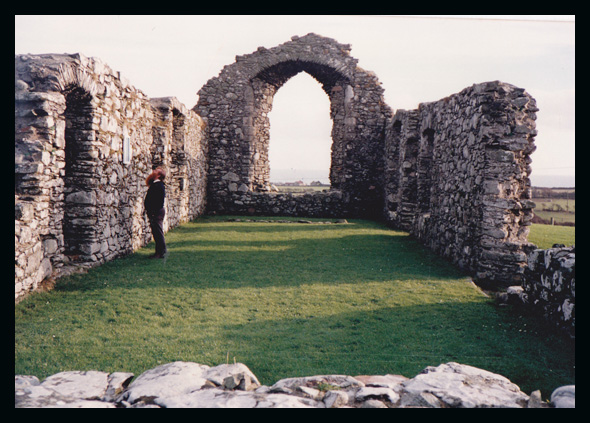 |
|
||||
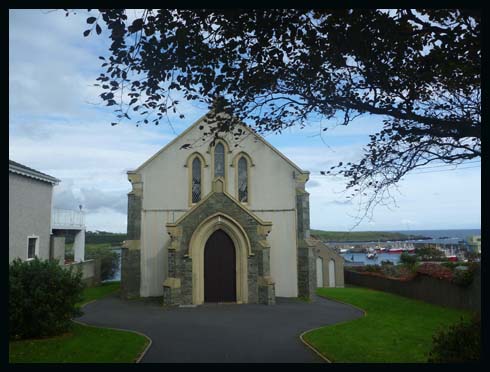 |
|
||||
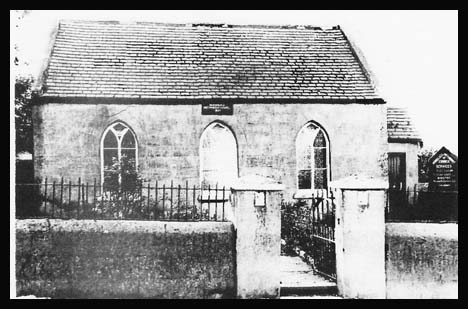 |
|
||||
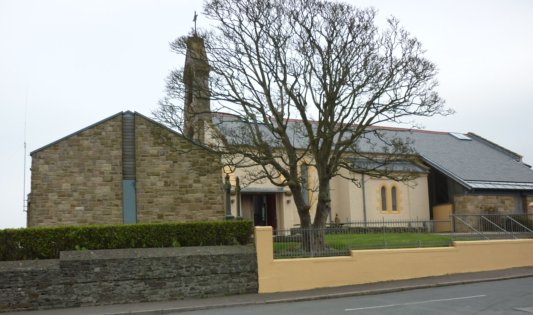 |
|
||||
| This photo was kindly sent by Marian Knox. You can see the old church in the middle |
The castle is at the junction of Kildare & Quay Streets, Ardglass. On the left , above is an X-ray view of the inside of Jordan's Castle after it was built and shows 5 distinct storeys including a base one. The latter one being arched over and still in perfect condition, forming the floor of the second storey. On the right, above is a recent photo showing that it is in good repair. This Norman castle was built around the 12th century by the Savage family acted as a citadel. It was the second most important of the English castles built in this area behind King's Castle. Yet it was more elegant than any other building in town but it changed hands frequently. Jordan de Sackville had come to Lecale with John de Courcy. In 1528 Thomas Jordan of Drogheda, a merchant, leased it as a warehouse. In 1578 it was taken from the O'Neills, after a stout resistance by Sir Nicholas Bagenal, Marshall of Ireland, who placed a strong garrison there and it fell again into the possession of the Irish in the rebellion of 1641 .It sustained a siege of 3 years. This was in the reign of King James 1st and was besieged by Con O'Neill ( a chieftain possessed of nearly all the northern part of the country), during the civil wars occasioned by the rebellion of O'Neill, Earl of Tyrone. It was successfully defended by the proprietor Mr Simon Jordan. He was relieved by the Lord Deputy Mountjoy on the 17th June 1601, who rewarded him for his gallant conduct. By 1836 it was not occupied but it wasn't in ruins either. The flooring of the upper storeys had fallen in and there was a winding staircase to the top and a bastion surrounding it with steps up to each turret, there being 4, one at each angle. In 1911, when the Beauclerk estate was put up for sale, Jordan's Castle was purchased by Francis Joseph Bigger, the Belfast solicitor and antiquary, who had already restored the ancient churches of Raholp and Ardtole. He restored the vanished floors and ceilings, adorned the walls with pictures of Ulster chieftains and put on display a collection of native furniture and antiquities. He changes its name to Castle Shane. He claimed that his objective was to bring the people of Ardglass and Lecale into touch with their Gaelic past and so he furnished the rooms with Irish oak tables and benches and with dressers stacked with pewter plates and old crockery. There was an open hearth and Bigger entertained his friends with traditional music and song. He lived there for a number of years but on his death in 1926, it was transferred to the Ministry of Finance and its old name restored. |
|||||||
| References;V17p 3OSM: LWA p 60, 66, 67:HMNI p103; O'L V1 p 167; DR 5/5/1938; LR 2005 p50; old postcard DR7/11/2007 p44*; LR 2008 p52-53; MO 31/10/2018 p45; |
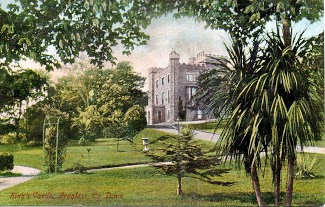 |
|
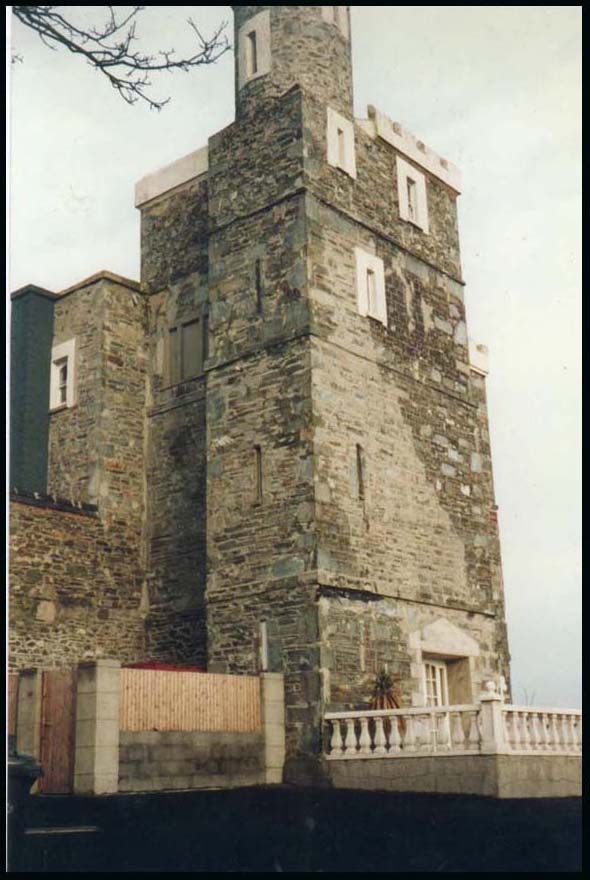 |
| This lovely old postcard was kindly sent by Vernon Moore. |
References;V17 p 3, 11, 12 OSM; LM 1989 p42-44 |
modern photo |
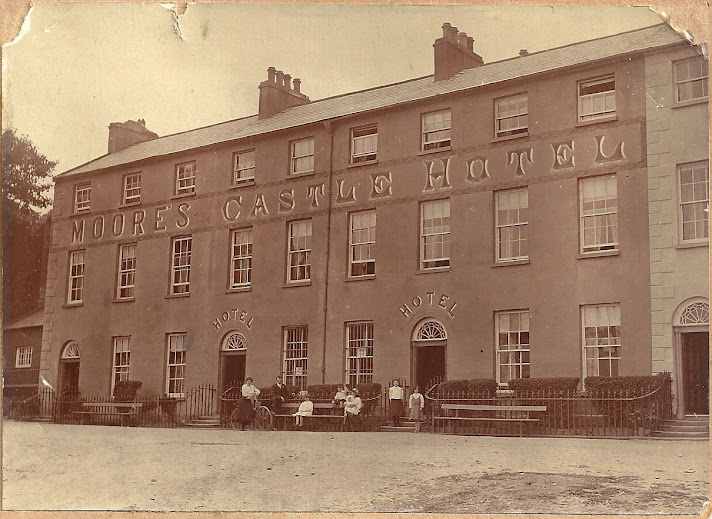 |
Moore's Castle Hotel in Castle Place, Ardglass Alexander Moore was the hotel's proprietor in 1901 & 1910. He bought the lease on Denvir's Hotel in Downpatrick in 1902 as well.
|
| This photo was kindly sent by Craig Moore | References; Craig Moore; POD |
by Ros Davies
